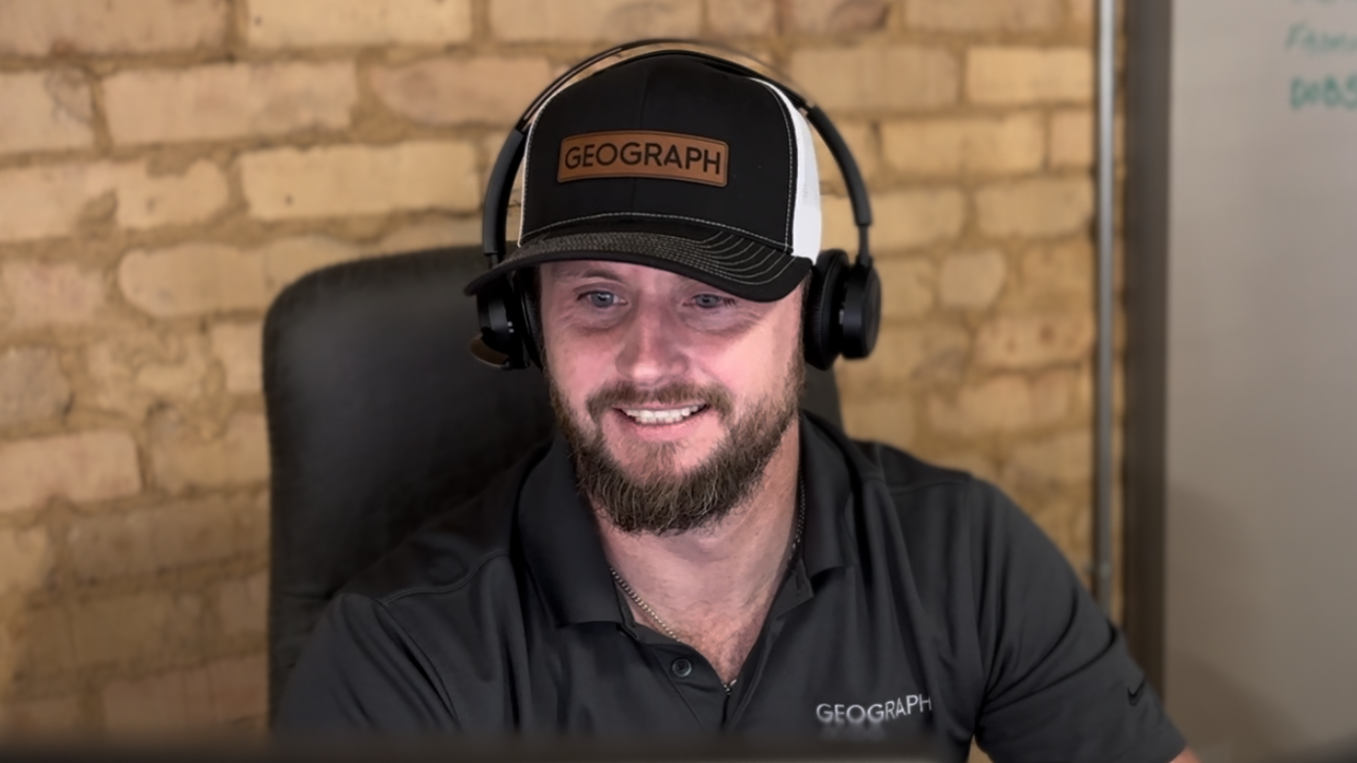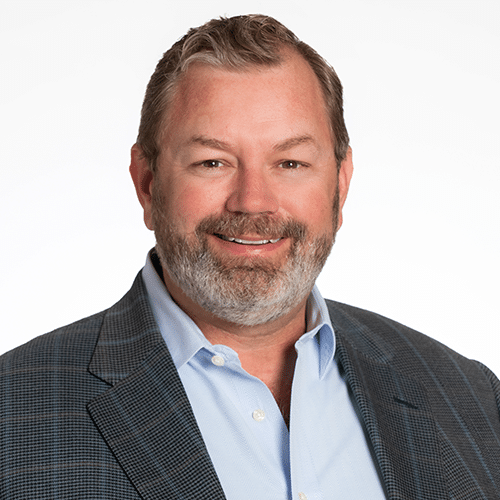By: Bruce Smith, CEO at GEOGRAPH
In the world of GIS and Fiber Management software, how important is longevity to your organization’s success?

With the advancements in Geographic Information Systems (GIS), computer science, artificial intelligence (AI), and computer learning, the need for constant improvement in software is not only necessary but expected. Everyday applications like; Google, Facebook, X, IOS, and Android operating systems have trained consumers to be on the cutting edge of technology without worry. Yet for operational tools like GIS, especially in the Fiber Optic Management sector, change is hard. How can your organization stay on the cutting edge of technology without upsetting the rice bowl?
The ancient Chinese proverb of the iron rice bowl which was inspired by Ji Yun’s Notes of the Thatched Abode of Close Observations and was illustrated by Stephen Covey states that the iron rice bowl symbolizes a forever position, one that is guaranteed and is without change. We tend to use this term when talking about the duties of folks who have settled into their position and do not wish to advance or be bothered. In many organizations, such duties exist where someone has become an expert at a task, or in this case, specifically an expert at a computer program or software. They become so entrenched in their expertise that they have secured their “rice bowl.”
This mentality is much different from the organizational leadership, they want the next newest thing to revolutionize their organization. Top leadership is consistently searching for the newest innovation or technology that will reduce cost, increase efficiency, and overall, bring value to the organization and its beneficiaries. This is where the battle starts. Operational change without buy-in is destined to fail.
This is why many organizations stay on legacy software products far too long. They may want cutting-edge technology but are hesitant to make the change for fear of revolt or fear of breaking someone’s rice bowl.
At GEOGRAPH, we are not immune to this phenomenon. For over a decade, our GIS Fiber Management Software, CrescentLink, has been helping organizations streamline their processes and workflows related to managing and operating fiber optic networks. To date, GEOGRAPH has successfully helped over 160 organizations to fully integrate their networks into the digital transformation age. There is no longer the need to keep stacks of paper maps or have numerous meetings to understand and have full insight into their geographically diverse networks. Information is presented at the click of a few buttons.
Over the last 10 years, these organizations have successfully moved past the digital transformation era and are now embarking on a growth and advancement stage. This requires the need to be at the top of the innovation landscape. These organizations must have the best tools at their disposal to quickly and effectively navigate the landscape that is broadband infrastructure. Yet we see a slow adoption of new technologies. Yes, there are requests, sometimes even demands to offer the next best thing, but when the time comes, the responses are similar. “We are going to wait a little while to make sure you have all the bugs worked out, before we move.” Or we hear, “Yes, we want new things, but we want it to look and feel like our old ways.” In other words, we have a pretty good rice bowl going here and we don’t want to mess that up.
So, how important is longevity in software products? The evidence points to, it being very important. If that is the case, how are we supposed to help our partners maintain their same way of life, but take advantage of the new world of technology? Here are four keys to how GEOGRAPH maintains longevity while still promoting innovation and new technologies.
Build on a Firm Foundation

Most all software products are built utilizing some type of foundation. Whether that be a data structure, a programming language, a storage location, etc. Being able to build software on a foundation that is tested, recognized, and stable is one key to longevity for software development. Esri is the global leader in GIS software. Founded in 1969 by Jack Dangermond, Esri has established itself as the leader in GIS applications and platforms.
Since its inception, the CrescentLink Fiber Mapping Software that GEOGRAPH develops, sells, and supports has been built on the Esri platform. CrescentLink launched on ArcMap 10.X and was the first Fiber Management Software to be established on this new release. This catapulted the launch of CrescentLink and the opportunity to be on the cutting edge of Esri technology. Over the past eleven years, the ownership of the product has changed from Palmetto Engineering to GEOGRAPH, but the foundation of the product remained entrenched in the Esri ecosystem.
In 2015, Esri launched a new generation of their popular ArcMap product called ArcGIS Pro. This product was meant to be a replacement for ArcMap. As stated above, the adoption and migration of ArcGIS Pro has been slow. GEOGRAPH has followed the progress since 2018 and has always had the desire for CrescentLink to be on the most up-to-date platform available. The biggest obstacle to GEOGRAPH making this change was, how well will this be adopted in our industry?
Much research and exploration went into the decisions made by our development team. One of the driving factors was the announcement of End-of-life for ArcMap by Esri. This means to achieve longevity, the GEOGRAPH team would have to make a change.
In 2023, we decided to migrate our long-standing CrescentLink product from ArcMap to ArcGIS Pro, and released the updated product in December of 2023. Having a stable long-term foundation meant that our customers and prospects did not have to worry about a product being deprecated, changed, or dropped altogether.
Being able to port all the key functionality from the ArcMap interface to the ArcGIS Pro interface, meant not only being again at the forefront of technology and innovation, it also meant GEOGRAPH could keep the same consistency as we have for the past decade.
Keep Consistency Between Products

The next key to longevity is consistency. No one wants to build workflows and keystrokes around a product only for it to change completely every couple of years. Just like when we open our favorite apps, there may be small changes, but for the most part, the buttons and clicks we are used to are still in place. This holds true, especially in the fiber broadband and communication space, where users tend to dislike disruptions to their established ways of working.
As mentioned above with the rice bowl mentality, change causes a disruption to their lifestyle. One thing we have learned over the past decade is that consistency is a major key to maintaining and reducing churn when it comes to OSP management systems. People are creatures of habit and when that gets disrupted, and change is introduced, it tends to create animosity. This disruption can lead to turnover.
The move to ArcGIS Pro is no different. Esri did a fabulous job of keeping the same workflows and foundation while enhancing the productivity, and use ability from ArcMap to ArcGIS Pro. The challenge is getting people to understand that.
GEOGRAPH did not want to be any different in our move to ArcGIS Pro. We wanted the process to be as seamless as possible so that there would not be any major learning curve in making the move. As stated previously, we have over 10 years of experience and customer testimonials, as well as over 100 plus years of combined experience in the telecommunications and fiber optics industry to know what tools organizations need to better do their jobs. We did not have to reinvent the wheel, we simply had to move the wheel to another interface.
Happily with the launch of CrescentLink for ArcGIS Pro, we were able to pick up the same great product that has served organizations well over the last decade and simply apply it to the newest foundation of the Esri ArcGIS platform. The ability to keep recognizable functionality, consistent look and feel, and familiar workflows is the next key to software longevity.
Create with Familiarity in Mind


We, as humans, are creatures of habit, when things are not familiar our natural instinct is to go into fight or flight mode. When it comes to software products, this reaction is no different. Every time a new release of a software product comes out, everyone starts putting their boxing gloves on to get ready for the fight. They become defensive, territorial, and angry that the familiar look and feel are now gone.
This is also present when trying to acquire or purchase a product. No organization wants to put all its chips into version 1.0 of any software because they fear how much it will change over time. What typically happens in either case, is they wait till the absolute last moment to upgrade or they wait on others to be on the bleeding edge of adoption. Is it possible to be on the leading edge of technology and innovation while also creating the same familiarity as always?
At GEOGRAPH, we believe the answer to that is yes, but it does not come with an easy button. There is a fine line between maintaining consistency and familiarity, while also advancing and innovating. Keeping the end user in mind during the process is the best way to adopt next-generation products. Building functionality that solves problems for the end user is always on our minds.
The advancements made at GEOGRAPH, specifically with the CrescentLink products, are not based on what we want to achieve but are built around what our customers, prospects, and the industry needs are. This coupled with making the look and feel of new products similar, with similar responses makes sure that we try to keep familiarity between all products. This means the end user can have confidence that when new technologies arise, GEOGRAPH will do everything in our power to not disturb their comfort level.
However, sometimes change is inevitable, new technologies don’t allow for the same consistency and familiarity. That is when a great support team comes into play to maintain longevity in the software industry.
Helpful and Timely Support

Maintaining longevity in the software industry requires a certain level of trust as well. When an organization puts an operational tool into place, they need to trust that it will deliver on what was promised.
Too many times, software companies just want to sell and they skip on the support. The mentality of: “As long as the acquisition rate covers the gap in unsubscribe rate, we are good.” Very few times is the lifetime value of a customer considered in the business relationship of a software company. Terms like ARR, Retention Rate, and Acquisition rate dominate the discussions.
Trust and longevity of our partners are what dominate the discussions at GEOGRAPH. Every decision we make is made based on several factors. One of which is how will our current customer base react to this, another is can we support it, and a third is does this help the overall industry. Because software products, especially in the GIS world, are not set-it-and-forget-it like in the mobile app world. Trust and support are a major key to longevity.
Another fallacy that we see in the software industry is that people try to monetize and prioritize support. We are asked all the time, do we have levels of support or what can someone pay to make sure they get attention when there is an issue? This type of thinking is very foreign to us. Trust and partnership are not based on how much someone pays.
Our support system is the same for everyone, regardless of how much they pay. If an organization is not willing to support their products, then how often they update, or how often they innovate doesn’t matter. The same nature mentioned earlier when facing something new is only resolved when you know you can trust your partner to help you through the difficulties of change.
In Conclusion
The broadband and fiber optic industry is a unique industry. It is one where technology is changing at the speed of light. New innovations, discoveries, and demands are constantly changing. Because of this, organizations need products they can trust to be solid, consistent, familiar, and supported on their side. The last thing these industries want to do is constantly learn new software, learn new workflows, and build new relationships. By focusing on the four keys outlined above, GEOGRAPH has been able to work with organizations for over a decade now while staying at the forefront of technology and innovation.
Learn More About GEOGRAPH and Our Latest Software Solution:
CrescentLink® for Esri® ArcGIS® Pro


Bruce Smith is CEO at GEOGRAPH and he began his career building copper and fiber networks over 25 years ago. He has overseen the construction of more than 10,000 miles of network improvements and he has designed, engineered, and managed projects and installations throughout the United States. Since June of 2018, Bruce has been at the helm of GEOGRAPH and has worked to establish a world-class organization focused on customer success. Today GEOGRAPH supports over 160 customers in 38 of the United States and in Canada, the British Virgin Islands, Bermuda, Guam, and Guyana.


